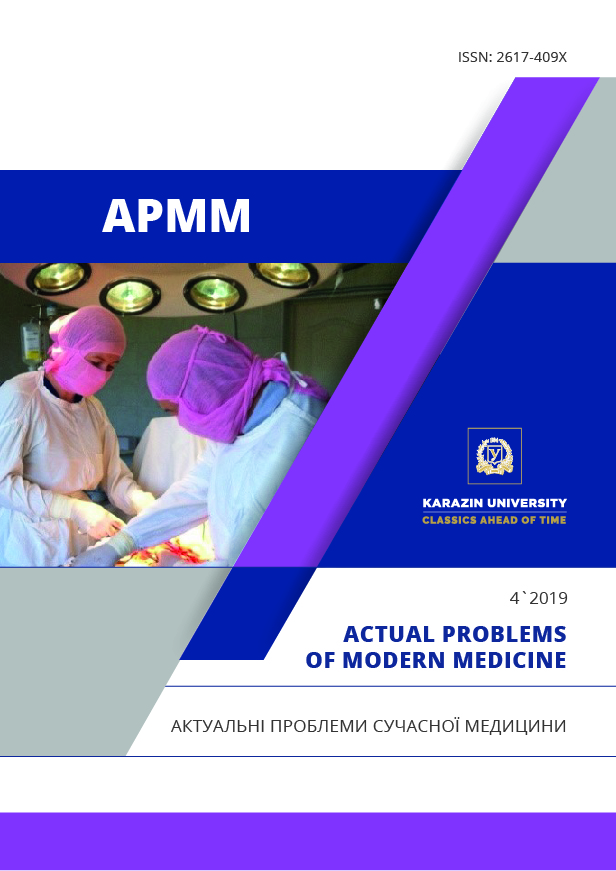Мodern aspects of organization of hygienic monitoring of atmospheric air as a factor of providing sanitary-epidemic mechanical disease
Abstract
Summary: The harmful effects of man-made air pollution cause impaired functioning of many systems of the human body, posing the greatest danger to the health of children. Both Ukrainian and foreign scientific researches have proved that not only increase in the number of diseases of the respiratory system takes place, but also the prevalence of allergic diseases and a decrease in cognitive function of schoolchildren. The relationship between atmospheric air pollution in school districts and the presence of diseases among schoolchildren has been established. Some chemicals, such as lead and manganese, can have a direct effect on the brain, cognitive function of children, their intelligence and impair pupils' performance. Analysis of statistical data in the Kharkiv region over a 25-year period indicates a tendency to increase the levels of carbon monoxide, nitrogen dioxide, soot, zinc in the atmosphere, against the background of the general reduction of emissions of organized and unorganized sources into the atmospheric air, including estimation per unit area and "technogenic load" per person. To date, sanitary and hygienic monitoring of atmospheric air is not organized in full, only full ecological monitoring is carried out. In this regard, the State Consumer Service of the Kharkiv region for 2019 developed a program of sampling of atmospheric air in the territories adjacent to the preschool institutions and schools of the region, with their further study on 12 ingredients - the main pollutants, most characteristic of both stationary and mobile pollution sources. Effective operation of the regional system of social hygiene and environmental monitoring is one of the necessary measures to stabilize and improve the environment, as well as the primary prevention of the harmful effects of industrial atmospheric pollution, including the identification of potential risk for the most vulnerable populations and development on the primary prevention of respiratory pathology.
Downloads
References
Grebnyak N.P., Fedorchenko R.A. (2018). Principles of prevention of the harmful influence of industrial atmospheric pollution on the status of population health. Environment & Health. Vol. 1. P.51-56.
Volkova Y. V. (2019). Analysis of morbidity in the child population living in the industrial megapolis area. Bulletin of biology and medicine problems. Vol.1(1). P.148.
Calderón-Garcidueñas, L., Mora-Tiscareño, A., Ontiveros, E., Gómez-Garza, G., Barragán-Mejía, G., Broadway, J., et al. (2008). Air pollution, cognitive deficits, and brain abnormalities: a pilot study with children and dogs. Brain Cogn. Vol. 68 (2). Р. 17-27.
Kozhina O.S. (2018). Influence of environmental factors on the manifestation of respiratory diseases. Child Health. №. 5, Vol.13. P.467-471.
Rudnytska O.P., Berdnyk O.V. (2016). Features of the morbidity formation among pre-school age children in dependence of ecological conditions in the places of residence. Еnvironment & health.Vol.4. P.73.
Sumenko V.V., Boev V.M., Lebedkov S.E., Roshchupkin A.N. (2012). The state of health of children depending on the level and nature of anthropogenic pollution. Hygiene and Sanitation. Vol. 91. P. 35-37.
Jordi Sunyer, et al. (2015). Association between Traffic-Related Air Pollution in Schools and Cognitive Development in Primary School Children: A Prospective Cohort Study. PLOS Medicine. 12(3): e1001792 DOI: 10.1371/journal.pmed.1001792.
Stefania Bertazzon, Rizwan Shahid (2017). Schools, Air Pollution, and Active Transportation: An Exploratory Spatial Analysis of Calgary, Canada. Int. J. Environ. Res. Public Health 14, 834.
Hicran Altuğ, Eftade O. Gaga, Tuncay Döğeroğlu (2014). Effects of ambient air pollution on respiratory tract complaints and airway inflammation in primary school children. Science of the Total Environment, p. 479–480. DOI: 10.1016/j.scitotenv.2014.01.12
Polischuk S.Z., каspijcteva V.Y. (2017). Subsystem of models of ecological monitoring for estimation of the state of atmospheric air. Bulletin of Dnipropetrovsk National University of Railway Transport. № 2, Vol. 68. P. 17-24.
Beketov V.E., Evtukhova G.P., Lomakina O.S. (2016). Analysis and assessment of the level of air pollution in Kharkiv. Man and the environment. Problems of Neoecology. № 3-4, Vol. 26. P. 97-103.
Report on the environmental situation in Kharkiv and measures to improve it. Website. URL: http://kh.ukrstat.gov.ua/pres-vipuski-za-2019-r.
Report on the state of the environment in the Kharkiv region in 2016, Kharkiv regional state administration, Regional reports on the state of the environment in 2016. Website. URL: https://menr.gov.ua/news/31778.html. (date of application: 14.11.2019).
Report on the State of the Environment in the Kharkiv Region in 2017, Kharkiv Regional State Administration, Department of Ecology and Natural Resources. Website. URL: https://kharkivoda.gov.ua/oblasna-derzhavna-administratsiya/struktura-administratsiyi/strukturni-pidrozdili/486/2736/95064. (date of application: 14.11.2019).
Report on the state of the environment in the Kharkiv region in 2018. Website. URL: https://kharkivoda.gov.ua/oblasna-derzhavna-administratsiya/struktura-administratsiyi/strukturni-pidrozdili/486/2736/100511 (date of application: 14.11.2019).




